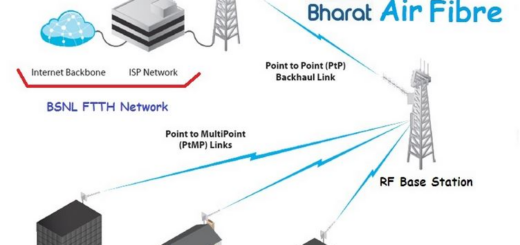National Current Affairs – UPSC/KAS Exams- 12th February 2020
Topic: Social Justice
In News: February 11 was the International Day of Women and Girls in Science, established by the United Nations to promote equal access to and participation in science for women and girls.
More on the Topic:
- While some of the greatest scientists and mathematicians have been women, they remain under-represented in comparison to their male counterparts in higher studies involving science, as well as among the top scientific achievers.
- According to a 2018 fact sheet prepared by UNESCO on women in science, just 28.8% of researchers are women. It defines researchers as “professionals engaged in the conception or creation of new knowledge”. In India, this drops to 13.9%.
- Between 1901 and 2019, 334 Nobel Prizes have been awarded to 616 Laureates in Physics, Chemistry and Medicine, of which just 20 have been won by 19 women. The double Laureate is Marie Curie, one of just three women who have won in Physics and one of just five in Chemistry, while 12 women have won the Medicine Nobel.
- In 2019, the American mathematician Karen Uhlenbeck became the first woman to win the Abel Prize, following 16 male mathematicians.
- The Fields Medal so far has also been awarded to only one woman mathematician, the late Maryam Mirzakhani of Iran, as opposed to 59 men since 1936.
- UNESCO data from 2014-16 show that only around 30% of female students select STEM (science, technology, engineering and mathematics)-related fields in higher education.
- Female enrolment is particularly low in information technology (3%), natural science, mathematics and statistics (5%) and engineering and allied streams (8%).
- In India, a 2016-17 NITI Aayog report compared female enrolment in various disciplines over five years, until 2015-16.
- In 2015-16, 3% of female students in undergraduate courses were enrolled in engineering, compared to 15.6% across genders.
- Conversely, 3% of female students were enrolled in medical science, compared to 3.3% across genders. Then, at master’s and doctoral levels, female enrolment remained lower than overall enrolment, and also fell behind for medical science in three of the five years.
Why the gender gap:
- Various studies have found that girls excel at mathematics and science-oriented subjects in school, but boys often believe they can do better, which shapes their choices in higher studies.
- In 2015, an analysis of PISA scores by OECD found that the difference in maths scores between high-achieving boys and girls was the equivalent of about half a year at school.
- But when comparing boys and girls who reported similar levels of self-confidence and anxiety about mathematics, the gender gap in performance disappeared — when girls were more anxious, they tended to perform poorly.
Way Ahead:
- As per NITI Aayog report, The problem of entry of women in science is not uniform across disciplines. Interventions geared to popularising subjects such as Engineering or the Physical sciences or Chemistry among female students at the school level in both urban and rural areas might be helpful in changing mind-set.
Model Mains Question: India suffers from huge gender pay gap. Discuss the causes and remedies.
Source: Indian Express
Topic: Economy
In News: The Reserve Bank of India (RBI) has proposed to set up a new pan-India new umbrella entity (NUE) or entities focussing on retail payment systems with a minimum paid-up capital of Rs 500 crore.
More on the Topic:
- The proposed entity will set up, manage and operate new payment systems especially in the retail space comprising of, but not limited to ATMs, white label PoS, Aadhaar-based payments and remittance services, develop payment methods, standards and technologies, monitor related issues and internationally, take care of developmental objectives like enhancement of awareness about the payment systems.
- Functions of NUE: It will operate clearing and settlement systems, identify and manage relevant risks such as settlement, credit, liquidity and operational and preserve the integrity of the system, monitor retail payment system developments and related issues in the country and internationally to avoid shocks, frauds and contagions that may adversely affect the system and the economy in general.
- Guidelines By RBI: No single promoter or promoter group should have more than 40 per cent investment in the capital of the entity.
- The promoters should upfront demonstrate capital contribution of not less than 10 per cent — Rs 50 crore — at the time of making an application for setting up of the entity.
- The promoter or the promoter group shareholding should be diluted to a minimum of 25 per cent after 5 years of the commencement of business. A minimum networth of Rs 300 crore should be maintained always
- The entity eligible to apply as promoter or the promoter group for the NUE should be ‘owned and controlled by residents’ with 3 years’ experience in the payments ecosystem as Payment System Operator (PSO) or Payment Service Provider (PSP) or Technology Service Provider (TSP).
Source: Hindu
More tribes in Karnataka in ST category
Topic: Governance
In News: The Lok Sabha passed The Constitution (Scheduled Tribes) Order (Amendment) Bill, 2019 by voice vote. The Bill seeks to include the Parivara and the Talawara communities in the ST category to ensure they get reservation and other benefits provided by the government.
More on the topic:
- The Siddi tribes of Belagavi and Dharwad would also be included in the category apart from those living in the Uttar Kannada districts. The amendments had been made in the list of the STs in Karnataka.
Source: India Today
Topic: Governance
In News: In the last five years, the Delhi model of education has caught the attention of people in Delhi and beyond. Education was supported by nearly 25% of the State Budget.
More on the Topic:
Key components of the model:
- The transformation of school infrastructure: The AAP government changed the school infrastructure by building new, aesthetically designed classrooms equipped with furniture, smart boards, staff rooms, auditoriums, laboratories, libraries, sports facilities and so on.
- Training of teachers and principals: Apart from the fact that a forum was created to encourage peer learning among them, several opportunities were given to teachers for their professional growth. They visited Cambridge University; the National Institute of Education, Singapore; IIM Ahmedabad; and other models of excellence in India. The exposure to new pedagogy and leadership training enabled Delhi to gradually move away from a uniform training model for all to learning from the best practices in India and abroad.
- Engaging with the community: School management committees (SMC) were reconstituted. The annual budget of each SMC is ₹5-7 lakh. The SMCs can spend this money on any material or activity, such as even hiring teachers on a short-term basis. Regular dialogue between teachers and parents was initiated through mega parent-teacher meetings. Guidelines are provided on how to engage with parents. Invitations for meetings are sent through FM radio, newspaper advertisements, etc.
- Major curricular reforms in teaching learning: In 2016, the AAP government noted that there was a nearly 50% failure rate in Class 9 and admitted that the poor foundational skills of children could be the reason for it. Special initiatives to ensure that all children learn to read, write and do basic mathematics was launched and made part of regular teaching learning activities in schools.
- Similarly, a ‘happiness curriculum’ was introduced for all children between nursery and Class 8 for their emotional well-being. Further, an ‘entrepreneurship mindset curriculum’ was introduced to develop the problem-solving and critical thinking abilities of children in Classes 9 to 12. Apart from these new curricular initiatives, the focus on existing subjects too ensured better performance in Board examinations by Classes 10 and 12.
- No fee increase in private schools: there was no fee increase in private schools. While the first four components impacted nearly 34% of children in Delhi’s government schools, arbitrary fee hikes earlier impacted about 40% children who go to private schools. In the past, almost all the schools increased their fee 8-15% annually.
- The AAP government not only ensured the refund of about ₹32 crore to parents which was excessively charged by private schools, it also ensured that any fee hike proposal was examined by authorised chartered accountants. Thus, for two years no school was allowed to raise its fee.
Source: PIB
Topic: Environment and Ecology
In News: Biosafety level (BSL) was in news due to setting up of a laboratory without adopting necessary guidelines from government at Manipal.
More on the Topic:
- A biosafety level (BSL) is a set of biocontainment precautions required to isolate dangerous biological agents in an enclosed laboratory facility.
- The levels of containment range from the lowest biosafety level 1 (BSL-1) to the highest at level 4 (BSL-4).
- In the United States, the Centers for Disease Control and Prevention (CDC) have specified these levels.
- At the lowest level of biosafety, precautions may consist of regular hand-washing and minimal protective equipment.
- At higher biosafety levels, precautions may include airflow systems, multiple containment rooms, sealed containers, positive pressure personnel suits, established protocols for all procedures, extensive personnel training, and high levels of security to control access to the facility.
- In India high risk pathogens can be tested only in BSL4 lab with highest level of biological safety, a BSL4 lab consists of work with highly dangerous and exotic microbes.
- Infections caused by microbes, including Ebola, Nipha and Marburg viruses, are frequently fatal, and come without treatment or vaccines are tested in BSL4 lab.
Source: Hindu
Topic: Personalities in News
In News: Kota Rani was in news related to Former Jammu and Kashmir chief minister Mehbooba Mufti.
More on the Topic:
- Kota Rani, who belonged to the Lohara dynasty, was the last Hindu queen who ruled over Kashmir. She was the daughter of Ramachandra, who was the commander-in-chief of Suhadeva — a Lohara king.
- The 14th century queen was known for her extraordinary administrative skills, and was seen as an icon of resistance, protecting the Valley from invaders.
- She was instrumental in the construction of a canal, which saved Kashmir from frequent flooding. The canal was named ‘Kutte Kol’.
- The canal, which is in Srinagar, gets its water from the Jhelum river at the entry point of the city and later merges with the river on the outskirts.
Source: Hindu



















